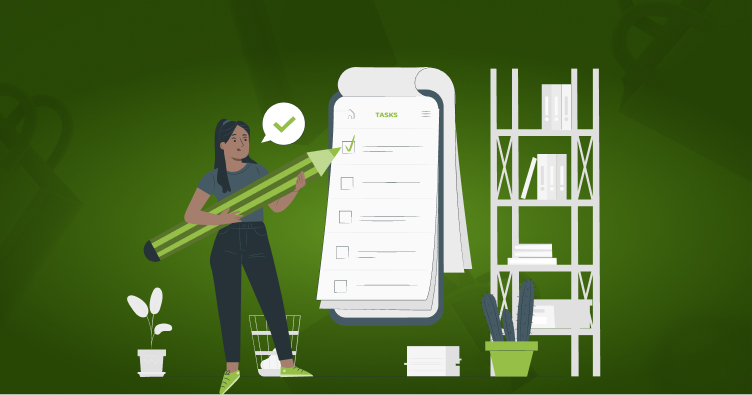Starting an Online Boutique Checklist with Shopify – How to Do that?
Last Updated | January 16, 2024
Table of Contents
Are you thinking about starting an online boutique? If so, then you’re in the right place! In this article, we’ll go over a checklist of how to start a clothing boutique online using Shopify.
This guide will cover everything from figuring out what to sell to learning how to start a clothing business by buying wholesale online
So, what are the steps to start an online boutique? Read on to find out!
Why Choose Shopify for Your Online Boutique
Shopify is a platform that helps you create an online store for your business. It offers users a customizable platform, an easy-to-use checkout process, and a wide range of features.
Shopify is an excellent choice for those looking to start an online boutique. The platform is user-friendly, has a wide range of features, and offers a customizable platform. You can also use Shopify to create an online storefront for your business. Check out our guide on starting an online boutique checklist with Shopify for more information.
How to Figure Out What You Want to Sell
So, first on starting an online boutique checklist is to figure out what you want to sell.
When you’re starting an online boutique, it’s important to carefully consider what products you want to sell. There are a few things to keep in mind as you figure out what items will be perfect for your store.
First, take a look at your personal style. What kind of clothing do you like to wear? What colors do you tend to gravitate towards? Your style can give you some clues about the type of clothing your customers will want to buy.
Next, think about the types of clothes that are popular in your area. If you live in a warm climate, beachwear might be a good option. Or, if you live in a city, trendy and stylish pieces might be best. Knowing what’s popular in your area will help you make decisions about the types of clothing to stock in your boutique.
A tip: If you’re looking for a mix of clothing items, consider including shoes, jewelry, and accessories. People often shop in these stores to complete an outfit or find the perfect accessory. And don’t forget about your customers’ kids! Children’s clothing is usually very popular in boutiques.
How to Research Your Competition
When you’re starting an online boutique, it’s important to research your competition. Here are a few tips on how to do that:
- Look at their website. See what kind of products they offer and how they’re priced.
- Check out their social media accounts. See what kind of engagement they have with their followers and what kind of content they share.
- Search for reviews of their business online. See what people are saying about their experience with the company.
- Research your competition’s keywords. See what keywords they rank for, and how well they’re doing in Google search results.
How to Set up a Shopify Account and Customize Your Store by Folio3?
Assuming you’re starting an online boutique from scratch, the first step is to set up a Shopify account. You can sign up at shopify.com. Once you’ve created your account, it’s time to start customizing your store. For this, you can hire folio3 Shopify web design solutions. They even offer Folio3 Shopify development services, Folio3 Shopify integration, custom Shopify development, Folio3 Shopify migration, and Folio3 Shopify Theme Customization.
If you don’t want to hire a development and design company, no worries. Shopify makes it easy to customize the look and feel of your store with their theme editor. You can browse through their themes or search for specific features like “minimal” or “responsive.” Once you’ve found the theme you like, you can click “Install” and start customizing it to match your brand.
There are a few key things you’ll want to customize:
- The colors: Choose colors that match your brand and will look good on your website.
- The header image: This image will be displayed in the top left corner of your website.
- The background color and pattern: A solid color is a safe bet, but if you want to jazz things up a bit, you can use a repeating pattern like stripes or polka dots.
- The background image: You can use an image of your choice. Just make sure it’s not too big; otherwise, your website may look funny on smaller screens.
Register Your Business With the State and Local Governments in the Us
When starting an online boutique, it’s essential to register your business with the state and local governments in the US. This will help you stay compliant with the law and avoid any potential legal problems down the road. To do this, you’ll need to obtain a business license and pay any required fees. You may also need to file for a fictitious business name if you’re doing business under a name other than your own.
Create a Branding Strategy, Including a Logo and Color Palette
Any business needs a strong branding strategy to create a lasting impression with potential customers. This is especially true for online boutiques, which need to stand out in a sea of e-commerce options. A good branding strategy should include a unique logo and color palette that accurately represents the boutique’s style and personality.
Creating a logo may seem like a daunting task, but many online resources can help. Once you have a few ideas, it’s important to get feedback from potential customers to see what they think. The color palette should be carefully chosen to match the logo and overall aesthetic of the boutique.
A well-executed branding strategy will make your online boutique more memorable and attractive to potential shoppers. With some careful planning, you can create a brand that accurately reflects your unique style and sets you apart from the competition.
How to Design Your Store by Folio3
When starting an online boutique, it is important to take the time to design your store in a way that is appealing to customers and easy to navigate. One way to do this is by using Shopify, a platform that allows you to create a professional-looking website without any prior experience. Folio3 can help you get started with Shopify and ensure that your store is designed correctly from the start.
Some things to keep in mind when designing your store include:
- The overall look and feel of your site. You want it to be visually appealing and on-brand with your style.
- The layout of your pages. Everything should be easy to find and organized in a way that makes sense.
- Your product photos. These should be high quality and accurately represent the items you are selling.
Find a Dropshipper or Produce Your Own Inventory
Now, it’s time to discuss where to buy clothes to start a boutique.
SOne of the first things you need to do when starting an online boutique is to decide whether you want to find a drop shipper or produce your own inventory. A drop shipper is a company that will ship products directly to your customers on your behalf. This can be a good option if you don’t want to deal with the hassle and expense of storing and shipping products yourself. However, it’s important to make sure that you find a reliable drop shipper that offers good quality products, as this will reflect on your business.
Producing your own inventory, on the other hand, can be a more costly and time-consuming endeavor, but it gives you more control over the quality of your products and allows you to build up your brand identity.
So, how to get inventory for an online boutique? Depends on you. Whichever option you choose, it’s important to develop the right product mix for your business.
Create Product Descriptions and Pricing
Next on the opening of a boutique checklist is creating product descriptions and setting pricing.
It’s important to be clear and concise when creating product descriptions for your online boutique. Be sure to include all pertinent information, such as size, weight, color, etc. You’ll also want to create enticing descriptions that will make customers want to purchase your products.
Pricing can be a tricky part of running an online boutique. You don’t want to price yourself too high and scare away potential customers, but you also don’t want to price yourself too low and miss out on profits. It’s important to do some research on pricing before you list any products in your shop. A good rule of thumb is to price your items at least 10-15% below what you would charge if you were selling them in a brick-and-mortar store. This will help attract customers and encourage them to buy from your shop again in the future.
Market Your Boutique to Customers
When you’re ready to start marketing your boutique, there are a few things you should keep in mind. First, you need to identify your target market. Who are you selling to? Once you know who your customers are, you can start creating content and advertising that appeals to them.
Next, you need to create a brand for your boutique. What kind of image do you want to project? What feeling do you want your customers to have when they think of your store? You can use social media, marketing campaigns, and even just the design of your website to create a strong brand identity.
Finally, don’t forget about SEO! Make sure that your website is optimized for search engines so that people can easily find it when they’re looking for what you sell.
Track Your Progress and Make Changes as Needed
If you’re starting an online boutique, it’s important to track your progress and make changes as needed. This will help you stay on track and make sure your business is successful.
- There are a few things you can do to track your progress:
- Keep a close eye on your traffic. Check where your visitors are coming from and what pages they’re looking at. This will give you an idea of what’s working and what’s not.
- Monitor your sales. Keep track of how many sales you’re making and which products are selling the most. This will help you adjust your inventory and marketing accordingly.
- Talk to your customers. Ask them for feedback on your products, shipping, customer service, etc. This will help you identify areas that need improvement.
Process Payments and Shipping
When starting an online boutique, it is important to set up a system to process payments and shipping. This can be done through a payment processor such as PayPal or Stripe, and a shipping service such as USPS or UPS. To get started, you will need to create accounts with these companies and set up your payment and shipping options in your Shopify account.
Once you have your Shopify account set up, you can start adding products. When you are ready to start taking orders, make sure that your payment and shipping options are set up and that you have all of the necessary information from your customers (such as their shipping address). You will also need to choose a method of shipping (such as the flat rate or calculated).
When an order comes in, you will need to process the payment and then ship the order out to the customer.
Shipping and Returns
Assuming you’re using Shopify as your eCommerce platform, shipping, and returns will be a breeze. Shopify integrates with major shipping carriers (USPS, FedEx, Canada Post) to make shipping easy and efficient.
As for returns, you can decide whether to accept or not accept returns on a case-by-case basis. If you do accept returns, you can process them through your Shopify admin panel. Keep in mind that processing returns can be time-consuming, so it’s important to have a clear return policy in place before starting your online boutique.
Starting an Online Boutique Checklist – How to Start an Online Boutique in Texas
Starting an online boutique in Texas is a great way to earn extra income or even replace your current job. The first step is to choose a niche. What type of clothing do you want to sell? What is your target market? Once you have a niche in mind, the next step is to create a business plan. This will help you set goals and figure out the costs associated with starting and running your boutique.
The next step is to choose a platform for your online store. Shopify is a popular option for small businesses because it’s user-friendly and has all the features you need to run a successful online store. Plus, there are no transaction fees if you use Shopify Payments. After you’ve set up your store, it’s time to start marketing your boutique. Create social media accounts and start promoting your products.
Starting an Online Boutique Checklist – How to Start an Online Boutique in North Carolina
Since you’re reading this, you’re probably interested in starting your online boutique. But where do you start? Before you can open your virtual doors, there are a few things you need to do first. Here’s the starting an online boutique checklist of everything you need to do to get started:
1. Choose your niche
The first step to starting any business is figuring out what you’re going to sell. Are you going to sell women’s clothes, men’s clothes, or children’s clothes? What about home goods or jewelry? Once you know what kind of products you want to sell, it will be easier to move on to the next steps.
2. Set up your shop
Now that you know what products you want to sell, it’s time to set up your shop. You can use Shopify for that. Shopify is a hosted platform, so you don t need to install or configure any software.
3. Design your storefront
Once you’ve set up your shop, you need to design the store s layout and products. You can use Shopify Theme Store for that. It has over 100 free themes for you to choose from.
4. Start selling!
Starting an online boutique checklist or Partner With Online Marketplaces
When it comes to starting an online boutique, one of the first decisions you’ll have to make is how you want to sell your products. Do you want to set up your eCommerce store, or partner with online marketplaces like Etsy or Amazon?
There are pros and cons to both options, so it’s important to weigh them carefully before making a decision. Setting up your eCommerce store gives you more control over your brand and allows you to build a direct relationship with your customers. However, it can be a lot of work to get started, and you may need some help from a developer if you want to create a completely custom website.
Partnering with an online marketplace can be a good way to get started quickly and start generating sales with minimal effort on your part.
Final Thoughts
Now that you know how to start an online boutique using Shopify, it’s time to get started! Use this starting an online boutique checklist as your guide to ensure that you have everything you need to get started. With a little effort and planning, you can be up and running in no time.














